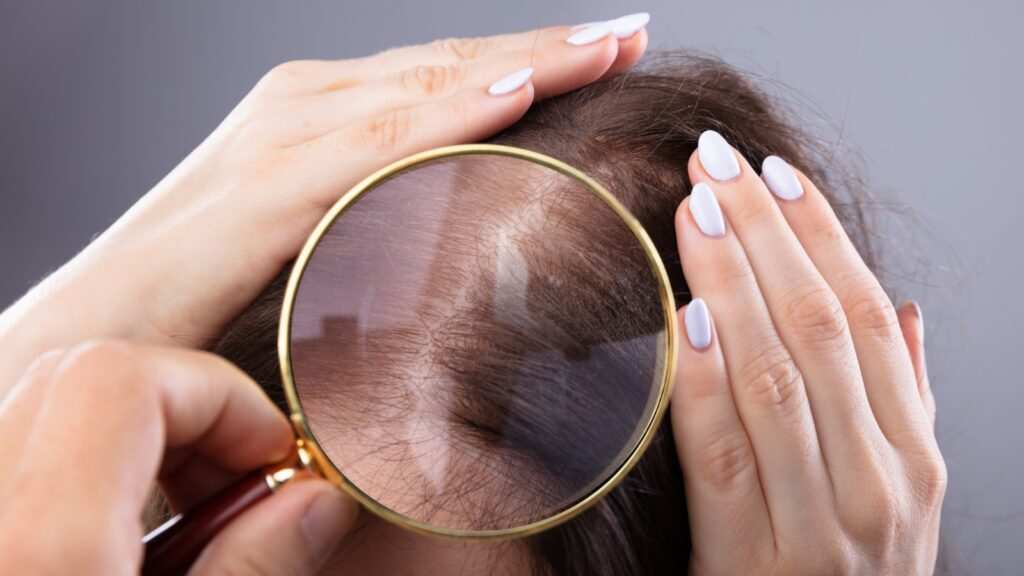What is Female Pattern Baldness?
Female pattern hair loss (FPHL) is a form of diffuse hair thinning and hair loss, characterized by the widening of the central region on the scalp. This type of hair loss is known as female pattern baldness. Analogue to male pattern baldness, female pattern baldness typically doesn’t involve pronounced hairline recession or balding in women.

Causes of Female pattern hair loss

Symptoms of Female Pattern Hair Loss
Women with FPHL typically notice the following symptoms:
- Gradual Reduction in Hair Volume: Hair becomes noticeably thinner and less voluminous over time.
- Hair Density Reduction: There is a decrease in the overall density of hair on the scalp.
- Widening of the Partition: The central part of the scalp widens, revealing more of the scalp beneath.
- Effortless Hair Shedding: Hair falls out more easily, and daily hair shedding may increase.
These changes can be emotionally distressing, leading to significant psychological stress and impacting self-esteem, particularly when it occurs in young women.
The Importance of Consulting a Dermatologist
Consultation with an experienced dermatologist is necessary if you have severe hair loss and thinning or suspect you have FPHL. This is important for a number of reasons:
Differential diagnosis: Although other illnesses, such as acute and chronic telogen effluvium, can resemble FPHL, they must be treated differently. An reliable diagnosis can be made by a dermatologist.
Blood tests can help rule out hormonal imbalances and vitamin deficiencies, which may be associated with hair loss, during a hormonal evaluation.
Personalized Care: Dermatologists can create treatment regimens that are specific to you based on your age, the seriousness of your problem, and any underlying causes.

Treatment Options for Female Pattern Baldness
At Satya Hair Solutions, we provide a variety of FPHL therapies. These therapies, which might vary depending on the patient, may include:
Medical Care: Prescription drugs like finasteride and minoxidil may be able to reduce hair loss and encourage hair growth.
Injections of platelet-rich plasma (PRP) stimulate hair follicles and encourage hair growth.
Low-Level Laser Therapy: This non-invasive procedure increases hair density and quality using low-level lasers.
Mesotherapy: A method that nourishes hair follicles by injecting vital nutrients into the scalp.
Surgical options for replacing lost hair include natural and hair transplants.
Scalp micropigmentation: A non-surgical method that involves tattooing the scalp to provide the appearance of fuller hair.
Book an appointment
Consultation

Repair

Blog

Galleries

Frequently Asked Questions
Yes, female pattern baldness often has a genetic predisposition and can run in families.
Yes, hormonal fluctuations during menopause can contribute to or exacerbate female pattern hair loss.
Maintaining a balanced diet, managing stress, and avoiding hairstyles that pull on the hair can help mitigate hair loss.
While it may not be possible to reverse FPHL entirely, various treatments can slow down hair loss and promote regrowth.
FPHL can affect women of all ages, but it becomes more prevalent as women get older.




